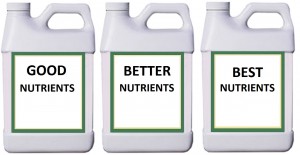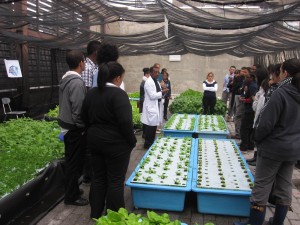 In this Age of Instant Gratification I can’t blame anyone for being impatient in the garden. People are used to Live Chat Help, Next Day Shipping from across the Country, and fast food that is served to you just as fast as you can make it to the second window. Now, now, now. We are all too used to it. What we need not do, is look at our plants growing as a service. They are more like children that require work, investment of both time and money, and patience. Much time goes by before the successful, responsible adult you hope they become is seen. The same in the garden, one product or one day of environment changes is not going to necessarily show results overnight.
In this Age of Instant Gratification I can’t blame anyone for being impatient in the garden. People are used to Live Chat Help, Next Day Shipping from across the Country, and fast food that is served to you just as fast as you can make it to the second window. Now, now, now. We are all too used to it. What we need not do, is look at our plants growing as a service. They are more like children that require work, investment of both time and money, and patience. Much time goes by before the successful, responsible adult you hope they become is seen. The same in the garden, one product or one day of environment changes is not going to necessarily show results overnight.
Your grow media will play into time frames of course. Hydroponics shows signs/changes much quicker than with soil. Quick example, when a hydroponically grown plants first shows visual signs of wilting you can still water it and 30-60 minutes later the plant will look as if it was never wilting. In soil, by the time you notice the plant wilting the roots can already be too dry and it can be too late to save it. If saved, the plant can take hours to stop wilting. So when adding new nutrients/supplements to your regimen, take into consideration what media you are using, the time frame it takes for nutrients to be absorbed, and additionally broken down and utilized within the plant tissue.
When adding a new product remember that many of them do their best when the environment is all dialed in. The more out of range your environment is the longer it is going to take for you to see results from a new product, if at all. So make sure everything else is working properly before discrediting results, and then even still…. Give it some time. Remember these products still possibly need to be chelated, then absorbed through media, dispersed through plant tissue, and photosynthesized. Also, there is no single product that is a cure-all so do not expect to see all the results from adding one thing. Some products take precedent over others. Things like enzymes, B Vitamins, and carbohydrates come before others like silicates, kelp extracts, etc. First your foundation then you can build a house on it, not the other way around.
Environment changes require just as much patience. Every time you change an environmental factor, many others can change with it. Heat causes plants to transpire more, and use more water, requiring reservoir top-off more frequently and making your humidity go higher, and the list goes on. As you see, environment changes can quickly trigger many other adjustments. It can all be done but needs to be done right. Always….give it some time. Make an adjustment and then watch and check all other factors over the next couple days, adjusting for what else may pop up, and giving each of those adjustments a few days of note taking and/or readjusting.
Going forward, I hope you will approach changes and new products that you want to try with patience. Give them time to work and adjust, and find their fit within this environment that you have created. Take notes and make other adjustments where needed. Note what worked for you and what did not work so well, but always give each change enough time to show. Make sure your environment is dialed in first, then work on your nutrient regimen by prioritizing what you are feeding your plants. Feel free to contact us at We Grow if you would like assistance in dialing in either.



